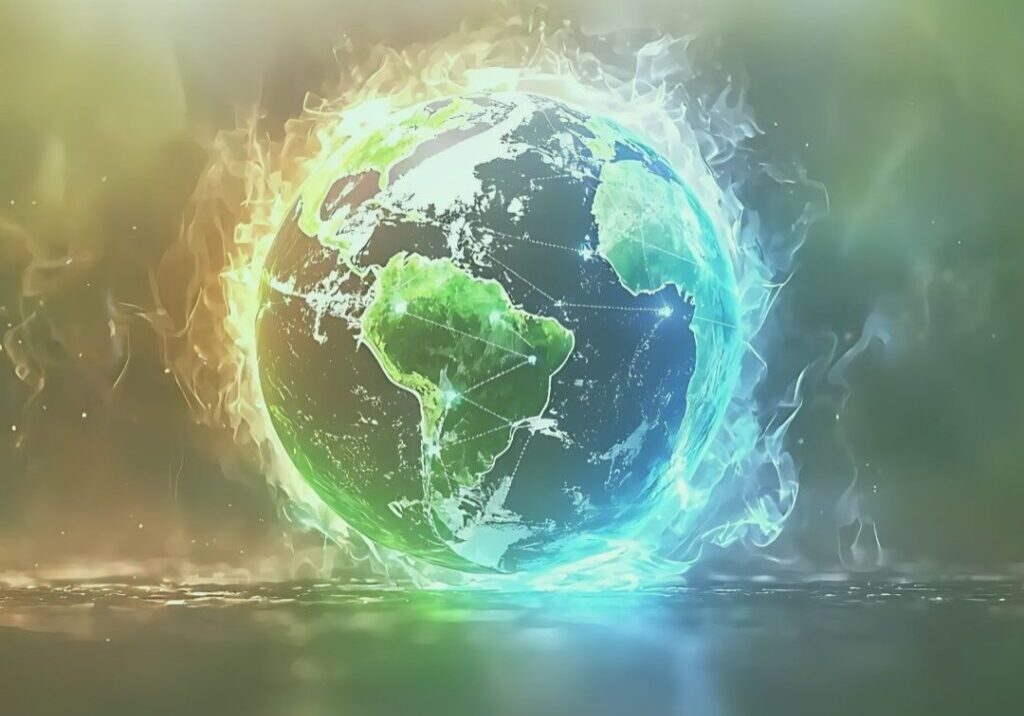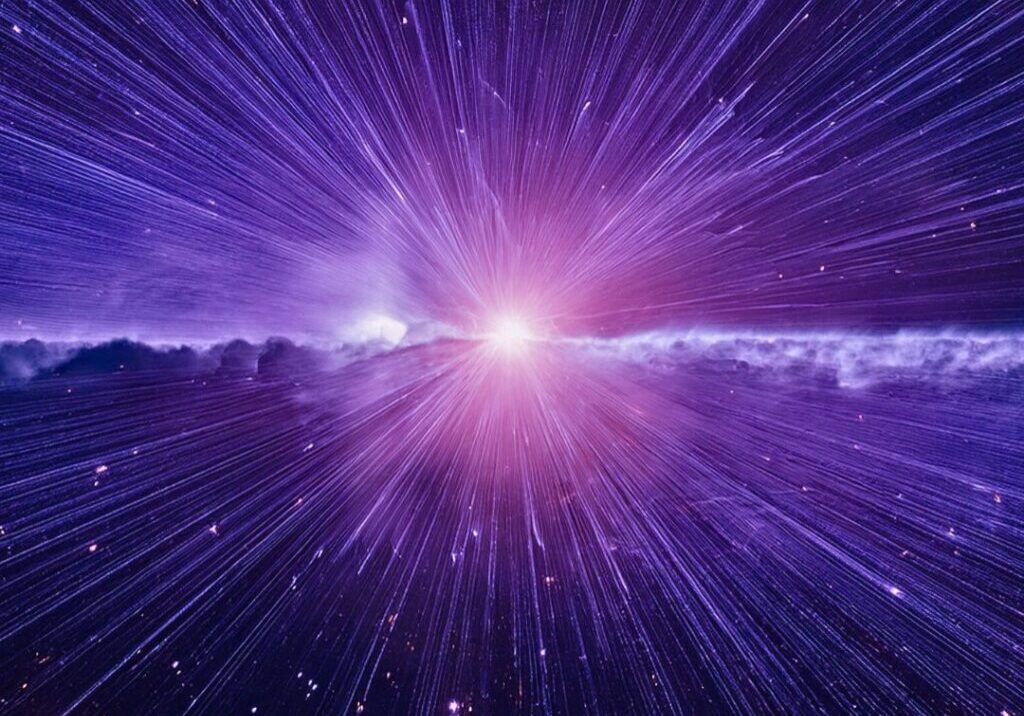Schism or Evolution?
Something momentous is happening in our midst. The concerted efforts to oust Pope Francis are deeply tied to the perverted crisis of abuse embedded in ecclesiastical power structures. While some may spiritually rely on Julian of Norwich’s “all shall be well”, the fact is, all is not well and will not be well unless the Church undergoes a deconstruction of power and authority and a reconstruction along new lines of inclusivity and integrated systems.
Evolution is the term used to describe the way biological life unfolds into new forms and structures over time. It is not a linear process but one of complexification whereby environmental factors, including stress and crisis, play a role in selecting out traits or behaviors that will optimize life. Intrinsic to this process are the forces of resistance, breakdown, devolution, and death. Considering the extent of sexual abuse in the Catholic Church and the more recent ideological battle between Archbishop Carlo Maria Viganò and Pope Francis, I am led to ask, is schism now necessary for the evolution of the Church?
Bill Dinges who is professor of Religion and Culture at Catholic University, recently wrote an insightful essay on why teens are leaving the church and the results are sobering. The millennial generation, he claims, has moved on from institutional religion. “Religious disaffiliation cuts across almost all traditions, although not equally,” Dinges writes. “It occurs among all age cohorts, but more dramatically among younger millennial and Generation Z respondent. Catholic disaffiliation—which currently represents the greatest net loss of any American religious group—mirrors the intergenerational and intragenerational realignment of religious preference and disaffiliation characteristic of the current American religious landscape in general.” Professor Dinges states unequivocally, “studies of religious disaffiliation point unmistakably in the direction of a post-Christian American future.” Given the present chaotic state of the Roman Catholic Church and the data on the rise of “nones” (those with no institutional affiliation), it is reasonable to suggest that the Catholic Church, at least in North America, will not survive long into the future.
The data on religious disaffiliation and the recent crises in the Catholic Church are intertwined. The battle between Archbishop Viganò and Pope Francis reflects the deep underlying tensions in the Church between what Michael Sean Winters calls the “EWTN Catholics,” those who want to restore the Church to a pristine past and post-Vatican II Catholics who support Pope Francis’s agenda of incarnating the Gospel as a fundamental transformative way of life. This difference is one of acosmic (world-denying) idealism and historical realism. The present crisis is not unlike the political battles in the early Church (2nd – 3rd centuries) over Arianism (Jesus was not truly God) and the corresponding disputes over the two natures of Christ, which led to the five-time exile of Saint Athanasius who was repeatedly threatened with death. It was Athanasius (d. 373 AD) who argued that if Jesus was not truly God, then we are not truly saved; God became human so that we may become like God.
The doctrine of the Incarnation plays out in our current ecclesial battles because at the heart of the abuse crisis and the polarization between conservatives and liberals is the platonizing tendency toward spiritualism, if not outright Arianism. Conservatives want a Christology based on original sin, suffering, and sacrifice not evolution, novelty, and future. There’s is a theology of human sinfulness, divine transcendent power and acosmic spirituality. Pope Francis, who is a Jesuit, emphasizes the Incarnation as God becoming human. Rather than positing a sterile patriarchal Father God, Francis emphasizes that God bends low in love to embrace us where we are. We do not have to attain spiritual perfection to be pleasing to God; rather, God has come to us in all the messiness and chaos of our world. This is the good news: God so loved the world that he has become enmeshed with the world in the person of Jesus Christ. While the conservatives want a changeless Church, a Church that transcends the shifting boundaries of history, Pope Francis wants a Church deeply engaged in evolution.
The Viganò circle of Bishops and believers are included in what is informally referred to as the Church of Pope Benedict, a Church based on medieval theology, static cosmology, and entrenched dogma, even if dogma contradicts modern science. The Benedict Church holds that orthodoxy or the true teaching of the Church resides in the unbroken apostolic tradition of the Petrine tradition, the men ordained and ontologically changed by the sacrament of Holy Orders. Their restorationist theology is based on an outdated Thomistic-Aristotelian philosophical synthesis and stands in contrast to the theology of Vatican II in which the Church recognizes that change is integral to history and to the working out of salvation in history. Pope Francis represents Vatican II theology which is less focused on orthodoxy and more concerned with orthopraxis, that is, embodying a living faith attentive to the cries of the poor and the earth, and a faith which expresses itself in mercy, compassion, and solidarity.
Where do we stand in this divided Church?
Do we want a purified Church walled in by unbroken apostolic succession, acosmic-spirituality and patriarchal power, or do we want a Church open to the world and engaged in evolution, where the incarnating presence of God is empowering creative new life?
We cannot confess “One, Holy, Catholic and apostolic faith” and live in the tension of a divided Church. Rather, we need a reality check. Since the pontificate of John Paul II and the strained interpretations of Vatican II, the Roman Catholic Church has been on a downward spiral of ideological and theological division. With the Viganò attack on Pope Francis, we begin to see the light of an inchoate schism; the seams of the church are busting open. This schism has not reached its full-blown proportions but at the current tempo of dissolution, it will erupt sooner than later.
Welling up between the Viganò (acosmic) and Pope Francis (historical) churches is the sexual abuse crisis. Perhaps we should like to smooth over this crisis by acknowledging a few bad apples who managed to manipulate the patriarchal power system. But the crisis is much deeper and symptomatic of deep structural dysfunction that, if left unchallenged, will catapult the Roman Catholic Church either into outright schism or historical irrelevancy. The Church is no longer One or Whole. It is divided, fragmented, and permeated with secrecy, abuse, and unbridled power. If the Church can be likened to the Titanic, there is a giant hole in the ship and it is starting to sink. Be assured that all who are standing still will sink as well, if they insist on doing nothing but wait.
Only God can save this wreck from crumbling—but salvation comes by no other way than the cross. Bonaventure’s profound insight is worth noting: “There is no other path” he wrote, “than through the burning love of the Crucified” (Soul’s Journey into God, ch. 7). Death is integral to life. This is not meant to be spiritualized or platonized; death is the source of all new life in the cosmos which is why the Christ event recapitulates cosmic life: “Unless a grain of wheat falls to the ground and dies,” Jesus said, “it remains just a grain of wheat but if it dies, it will produce an abundant harvest” (Jn 12:24). Similarly, “if you cling to your life, you will lose it; but if you give up your life for me, you will find it” (Matt 10:39).
The Church is grounded in a self-emptying God. Divine love pours itself out unto death for the sake of new life. We have spiritualized this core belief and now we are challenged to act on it. The God of Jesus Christ is a God of absolute love and radical freedom who is revealed not in the power of separation and exclusion but in the power of darkness, emptiness, and death. The power of God is shown in the powerlessness of the cross. It is this incarnational commitment of divine love that renders Christianity a religion of evolution, as Teilhard reminded us, which makes death and letting go integral to life.
We are at a crossroads in the Church, a decisive moment for the future of an institution that is sinking in corruption. “Trust in God and trust in me,” Jesus said (Jn 14:1).
Do we trust God enough to let go of an imperialized, political church and enter into new structures of relationships?
Can we trust the Spirit of Love to energize us to create anew?
Can we lose what we have clung to in the Church for centuries and enter into the darkness of new structures and systems of organization that are inclusive?
The time is coming when every person who loves the Church will have to face death in many forms, in what we have known, in what we have loved and in what we have cherished. The dawning of a new Church is upon us and what form this Church will take in the future depends on the depth of our inner freedom to act in new ways.
Beatrice Bruteau wisely noted that revolution does not mean a coup d’etat where one set of rulers is replaced by another set while the structure of ruling itself remains basically the same—that is only rebellion. A genuine revolution, she claims, must be a gestalt shift in the whole way of seeing our relations to one another so that our behavior patterns are reformed from the inside out. Any revolution worthy of the name must be primarily a revolution in consciousness. A significant future, according to Bruteau, will not be born until the orientation of the axis itself has been shifted.
Because the coming revolution in consciousness is truly new, a genuinely radical shift in our basic perceptions, we cannot possibly know just what form it will take. We need a new perspective in which to view our elementary personal, social, and economic relations, and new images in which to represent them mythically to our imaginations, which in turn direct much of our life. We are far from this Church at present but a new consciousness is being born. In her book, The Grand Option, Beatrice Bruteau brilliantly describes a new understanding of Christ for a new way of being Christian:
To enter by our transcendent freedom into Christ and to become a New Creation means to enter by faith into the future of every person and into the very heart of creativity itself, into the future of God.
To be “in Christ” is to abandon thinking of oneself only in terms of categories and abstractions by which one may be externally related to others and to coincide with oneself as a transcendent center of energy that lives in God and in one’s fellows—because that is where the Christ lives, in God and in one another.
To be “in Christ” is to experience oneself as an initiative of free energy radiating out to give life abundantly to all, for that is the function of the Christ. To be “in Christ” is to be an indispensable member of a living body, which is the Body of Christ.
To be “in Christ” is to be identified with the Living One who is not to be sought among the dead, for the Living One is the One who is Coming to Be.
If I am asked then, “Who do you say I am?” my answer is: “You are the new and ever renewing act of creation. You are all of us, as we are united in You.
You are all of us as we live in one another. You are all of us in the whole cosmos as we join in You exuberant act of creation. You are the Living One who improvises at the frontier of the future; and it has not yet appeared what You shall be (Bruteau, The Grand Option, 172-73).
 View print-friendly version
View print-friendly version
32 Comments
Related Posts

The Earth Groans, AI Grows: Who Guides the Flame?
In this critical moment of planetary history, where ecosystems collapse, artificial intelligence proliferates, and human meaning trembles on the edge of uncertainty, we are faced with a profound question: What kind…


I so agree Curtis. Thank you,
Ilia for you life giving comments.